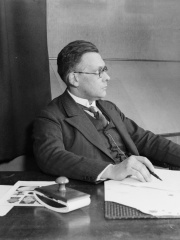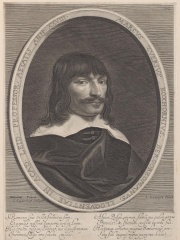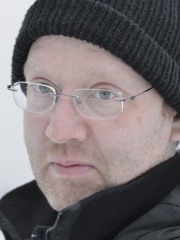



The Most Famous
LINGUISTS from Netherlands
This page contains a list of the greatest Dutch Linguists. The pantheon dataset contains 214 Linguists, 4 of which were born in Netherlands. This makes Netherlands the birth place of the 15th most number of Linguists behind Georgia, and Japan.
Top 4
The following people are considered by Pantheon to be the most legendary Dutch Linguists of all time. This list of famous Dutch Linguists is sorted by HPI (Historical Popularity Index), a metric that aggregates information on a biography's online popularity.

1. Teun A. van Dijk (b. 1943)
With an HPI of 59.68, Teun A. van Dijk is the most famous Dutch Linguist. His biography has been translated into 17 different languages on wikipedia.
Teun Adrianus van Dijk (born 7 May 1943 in Naaldwijk, German-occupied Netherlands) is a scholar in the fields of text linguistics, discourse analysis and Critical Discourse Analysis (CDA). With Walter Kintsch he contributed to the development of the psychology of text processing. Since the 1980s his work in CDA focused especially on the study of the discursive reproduction of racism by what he calls the 'symbolic elites' (politicians, journalists, scholars, writers), the study of news in the press, and on the theories of ideology, context and knowledge. He founded five international journals: Poetics, Text (now called Text & Talk), Discourse & Society, Discourse Studies, Discourse & Communication, of which he still edits the last three. Teun A. van Dijk was a professor of discourse studies at the University of Amsterdam from 1968 until 2004, and since 1999 he has taught at the Pompeu Fabra University, Barcelona. In 2017 he founded the Centre of Discourse Studies in Barcelona. He has widely lectured internationally, especially in Latin America.

2. Jan de Vries (1890 - 1964)
With an HPI of 59.44, Jan de Vries is the 2nd most famous Dutch Linguist. His biography has been translated into 16 different languages.
Jan Pieter Marie Laurens de Vries (11 February 1890 – 23 July 1964) was a Dutch philologist, linguist, religious studies scholar, folklorist, educator, writer, editor and public official who specialized in Germanic studies. A polyglot, De Vries studied Dutch, German, Sanskrit and Pali at the University of Amsterdam from 1907 to 1913, and gained a PhD in Nordic languages from the University of Leiden in 1915 with great distinction. Subsequently, authoring a number of important works on a variety of subjects, De Vries was in 1926 appointed Chair of Ancient Germanic Linguistics and Philology at the University of Leiden. In subsequent years, De Vries played an important role at Leiden as an administrator and lecturer, while publishing a number of important works on Germanic religion and Old Norse literature. Combined with his university duties, De Vries was a leading member of the Maatschappij der Nederlandse Letterkunde and the Royal Academy of Dutch Language and Literature, led several civil organizations, edited a number of encyclopedias and magazines, and was instrumental in establishing folklore studies as a scientific discipline. De Vries collaborated with the Nazis during World War II. When democracy was restored in the Netherlands in 1945, he was imprisoned for several years, fired from his university, expelled from the learned societies in which had previously been a leading member, and deprived of the right to vote. He eventually received permission to work as a secondary school teacher in Oostburg. Living in isolation, and with his entire library having been destroyed during the war, De Vries committed himself to writing. In subsequent years, he authored a number of influential works on Celtic religion, Old Norse and Dutch etymology, and revised second editions of his works on Germanic religion and Old Norse literature. His works on these subjects have formed a central basis for modern research, and have remained standard texts up to the present day.

3. Marcus Zuerius van Boxhorn (1612 - 1653)
With an HPI of 55.98, Marcus Zuerius van Boxhorn is the 3rd most famous Dutch Linguist. His biography has been translated into 17 different languages.
Marcus Zuerius van Boxhorn (August 28, 1612 – October 3, 1653) was a Dutch scholar (his Latinised name was Marcus Zuerius Boxhornius). Born in Bergen op Zoom, he was professor at the University of Leiden. He discovered the similarity among Indo-European languages, and supposed the existence of a primitive common language which he called 'Scythian'. He included in his hypothesis Dutch, Greek, Latin, Persian, and German, later adding Slavic, Celtic and Baltic languages. He excluded languages such as Hebrew from his hypothesis. He died in Leiden.

4. Rogier Blokland (b. 1971)
With an HPI of 52.57, Rogier Blokland is the 4th most famous Dutch Linguist. His biography has been translated into 23 different languages.
Rogier Philip Charles Eduard Blokland (born February 16, 1971, in Dordrecht) is a Dutch linguist and Professor of Finno-Ugric languages at Uppsala University.
People
Pantheon has 4 people classified as Dutch linguists born between 1612 and 1971. Of these 4, 2 (50.00%) of them are still alive today. The most famous living Dutch linguists include Teun A. van Dijk, and Rogier Blokland. The most famous deceased Dutch linguists include Jan de Vries, and Marcus Zuerius van Boxhorn.

